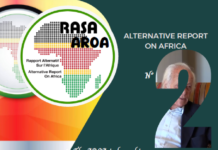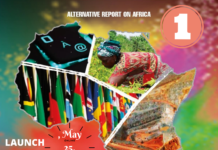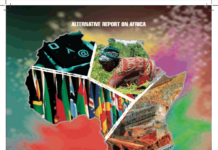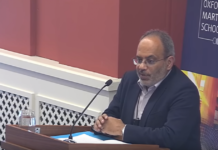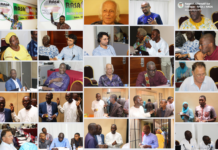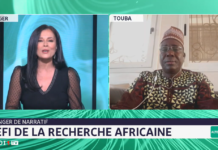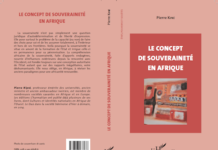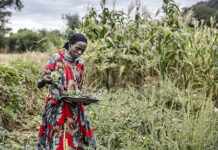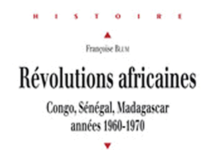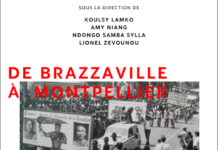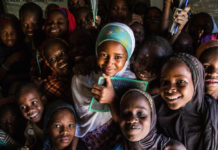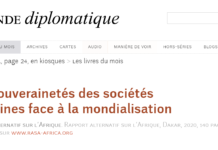For Cameroonian economist Martial Ze Belinga, the development potential of the cultural economy in Africa must be unleashed. This under-exploited sector could become one of the most promising for the continent.
Martial Ze Belinga, Cameroonian economist and sociologist.
The cultural economy in Africa, often neglected in development plans, could be one of the most dynamic sectors on the continent if it were managed. In the absence of an organised market and strong political interest, this potential remains largely under-exploited, according to Cameroonian economist Martial Ze Belinga, who lives in Paris.
What is the cultural economy in Africa?
Beyond the arbitrariness of institutional delimitations and conceptual ambiguities, the economy of culture ranges from literary production to shea butter, via hair aesthetics (braids), heritage and crafts. It includes, of course, the arts and entertainment, fashion, music and audiovisual – all activities that come up against the question of the institutional, legal and economic recognition of knowledge holders, authors and producers of intellectual works (status, plagiarism, biopiracy, etc.).
The economy of culture, in its diversity, takes into account everything that is produced by culture in the broad sense, a complex sum of knowledge with high added value and export potential. In crafts or gastronomy, there are too few African initiatives that are competitive in the long term, such as the woven loincloth company of Aïssa Dione in Senegal, which is sold to major luxury brands like Hermès. African masks sold on the pavements of New York, or airport art on the continent often represent one of the least qualitative sides of the African offer!
The economy of culture can, however, have a real economic weight: in 2008, a European study[1] estimated the contribution of cultural activities in Mali at 2.38% of GDP and 5.8% of jobs, including 3.8% for so-called art crafts.
Is it possible to industrialise a craft that is still largely informal?
Yes, to some extent. Africans have already supplied the world’s leading retailers, such as Wal Mart in the United States or Galeries Lafayette in France. In the case of the Djembe or Ashanti (Ghana) stool sector, success often depends on the meeting of professionalized artisans with a minimum level of education, with actors with a commercial profile and even with specialised associations such as Aid To Artisans. These synergies are essential to get past the stage of a survival activity. An appropriate legal and administrative framework must provide sufficient incentive for the actors.
That said, it is not easy to sustain a sector with strong international competition: each stage of the value chain must be optimised: knowledge of the markets, structuring of craftsmen, upgrading, training and financing. Each stage of the value chain must be optimised: knowledge of the markets, structuring of craftsmen, upgrading, training, financing. The fact of having succeeded in a few large international orders can temporarily give credibility to an entire offer. However, at the level of public policies, professionals and entrepreneurs, there is a lack of ambitious and creative global strategic intelligence that is equal to the challenges.
Have some countries understood the importance of the sector?
In South Africa, a Cultural Industries Growth Strategy was put in place by the Department of Industry and Trade as early as 1998, under the leadership of Wendy Goldblatt, who founded the Craft Council of South Africa. This sector was also identified as one that could quickly benefit disadvantaged black populations in the spirit of Black Economic Empowerment (BEE). Today, the Arterial Network of African creative economy actors is developing, supported by South Africa.
In Ethiopia, the success of the Sole Rebels shoe brand has become a textbook case. Since 1988, Burkina Faso has organised the Salon International de l’Artisanat Ouest-Africain (SIAO), a biennial pan-African event which has the merit of having built up a regional reputation, even if it should be renewed in a trade of innovation (fair).
In general, African artisans have low levels of education, but possess rare forms of endogenous knowledge. The potential is enormous in terms of poverty reduction, since crafts generate income that benefits very modest and vulnerable social strata (school dropouts, unemployed, women, rural people, the disabled). Some of Ghana’s top handicraft exporters report annual revenues of up to US$400,000.
The real handicap of these sectors lies in the capacity to increase volumes without losing quality. It is necessary to manage the recruitment of craftsmen, their training, orders, quality, logistics, cash flow, etc. Ignorance of the basic techniques of international trade accentuates the risks of quality being crowded out by quantity.
Also read on iD4D: « Liberate African SMEs », by Didier Acouetey, President of AfricSearch Group and initiator of the Africa SME Champions Forum.
What are the consequences of this?
The large decorating houses in the northern hemisphere have financed the imitation of African handicrafts, as they cannot find them in sufficient quantities locally. It is a shame that foreign imitations of African products, such as djembes made in Asia, can be found on African markets!
The fashion for loincloths and printed textiles has taken hold everywhere. Wax is not originally African, but Africa has appropriated this textile that historically came from Indonesia via European colonisation. The dynamism of this aesthetic is carried by the continent and taken up today by Western brands such as the ready-to-wear house Agnès b., to name but one, which make imitations of it. How many fashion houses have made sales and built a reputation on African artefacts such as Tuareg jewellery reproduced outside Africa?
What do you recommend to get out of this situation?
Part of the problem is the acculturation of the African elites, most of whom aspire only to a lifestyle based on Western mimicry and whose mental structures can no longer perceive the local excellence that lies beneath their feet. These are acute sociological and collective psychology problems, since part of the intelligentsia sees intelligence as an import. As long as Africa does not give itself the means to build its self-confidence, does not develop its material and immaterial resources, and continues to wait for a hypothetical development from outside with export rents, it will be the status quo. Raw materials will continue to drive out cultural materials.
Isn’t a turning point being made with the rise of a young and uninhibited Africa, which is organising Black Fashion Weeks on the continent and throughout the world?
Everything depends on the resources that this Africa will be able to mobilise, on the knowledge that will be transmitted to it, on the self-awareness in which it will bathe, on its capacity for transgression. Its ability to criticise on endogenous grounds the fashionable discourse on ‘the emergence of Africa’ or ‘Africa, the last frontier of growth’ will be decisive for the restoration of hope.
Also read on iD4D: « Enabling African youth to become the entrepreneurs of their own destiny », by Franck Tognini, associate professor at the University of Lille 1.
From this point of view, it is necessary to take a reasonable distance from statistics, which are often static: noting quantitative regularities such as high growth rates is radically insufficient when these depend on the global situation, internal and international power relations, such as the geostrategic choices of raw material supplies. Having all the world’s multinationals on your territory is not the same as being a winner for yourself in the game… It could even be a symptom of predatory economies!
Are these perspectives sufficiently discussed in Africa?
We have a huge task ahead of us in this respect, as we will no longer experience the industrialisation of the 19th century, due to the depletion of resources. Whether we like it or not, we are in a position to repair the Earth, not out of moral posturing, but because we have no choice, as Africa is home to a biodiversity that is unparalleled in the world.
The old models of industrialisation and consumption have damaged our common tool, the planet. We will have to find scientific and political intelligence and imagination to face these astronomical challenges


